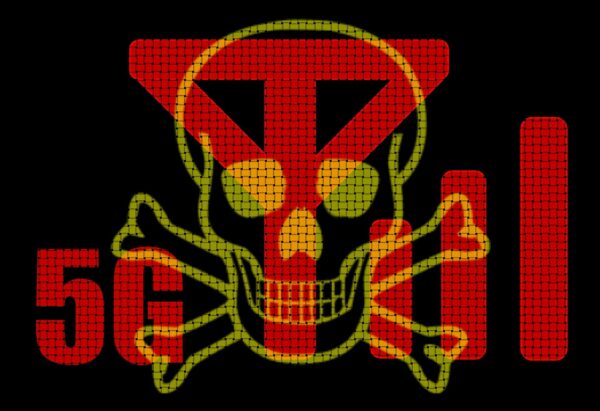

THE SATANIC HIP-HOP INDUSTRY By Tommy Truthful & Yebo
The Mark of the Beast and Upside-Down Symbols: Tracing Devil’s Impress on Rap Music
The intricate bond between Satan and the rap music genre dates back to the early ’90s. This relationship, entrenched in elements of taboo and skepticism, remains a topic of contention among musicians, reviewers, and enthusiasts even today.
Today’s rap scene, spotlighted by artists like Lil Uzi Vert, SahBabii, and Trippie Redd, has been controversial due to their vivid use of Satanic symbols in their musical narratives and visual depictions. Adding fuel to the fire, Lil Nas X’s provocative “Montero (Call Me By Your Name)” video, where he performs a risqué dance for the devil, has drawn widespread attention. Yet, intertwining rap with these themes isn’t a newfound connection; it traces its origins to the early ’90s.
While the mention of Satanic imprints often conjures images of rock music – credited to iconic figures like Black Sabbath, Slayer, and Marilyn Manson – rap’s tryst with devilish symbols has been equally significant. However, this association is multi-layered, especially when recognizing that rap emerges from black American traditions where faith is paramount. As per the National Pew Research Center’s Religious Landscape Study, a dominant portion of the black population holds a steadfast belief in God. Moreover, three-quarters of the respondents emphasized the profound role religion plays in their lives. This strong faith-centric sentiment starkly contrasts with the minuscule fraction of the black community who identify as non-believers or consider religion’s role minimal. A mere nine percent of this demographic does not align with any religious denomination.
Conclusively, religious beliefs, primarily centered around Christianity, are deeply interwoven into the fabric of black identity in America.
The incorporation of Satanic symbols or themes in rap has often sparked heated debates. In 1993, after sealing a deal with Columbia Records, Big L dropped a promotional track named “Devil’s Son” that contained lines like:
“In my head, the mark of the beast, no illusions When I rage, Mom clings to the holy symbol
Taking down foes without emptying the wallet
Aligned with the underworld, not the divine light
To my adversaries, I’m relentless
Big L emerges from the inferno, truly the infernal offspring.”
Due to its explicit content, radio stations chose to sidestep “Devil’s Son.” By 1995, the rapper from Harlem unveiled his first album, Lifestylez ov da Poor & Dangerous. It showcased tracks like “Danger Zone,” carrying verses that hinted at “The notorious number in tunes straight out of fiery pits,” and “On Sabbath, a holy woman falls victim to my wrath / Forget legendary tales, walk the path of the infernal offspring.” Given the overt themes, Columbia barely marketed the album, eventually leading to Big L’s departure.
A decade and a half later, Lord Finesse, who had a hand in producing parts of Lifestylez, delved into “Danger Zone” and its association with horrorcore rap – a niche dominated by chilling themes like demise, agony, and devil worship. This sub-genre was gaining traction, partly propelled by bands like Gravediggaz.
Finesse remarked in a chat with HipHopDX, “With Gravediggaz in the limelight, L thought, ‘You find that dark? Wait till you hear this.’ He had a deeper thought process than the album suggests. For Lifestylez Ov Da Poor & Dangerous, he wore a persona, and that persona needed authenticity. It balanced the realities of Harlem with dramatic flair.”
DJ Paul, a founding member of Three 6 Mafia, resonated with this notion of character portrayal. For him, Three 6 was incomplete without the dark themes.
He reflected, “Our influence came from thrillers and tales of serial wrongdoers. It’s akin to Robert De Niro embodying evil [in Angel Heart] or Al Pacino’s role [in The Devil’s Advocate].”
Despite the dark motifs, Paul’s upbringing was in a devout setting. Regular church visits with his family were the norm, a tradition he continues. However, Three 6 presented an avenue to channel his internal struggles and real-life tumult, all wrapped in his affinity for the macabre.
“In my history, picture a rebel or demon lover; skim through my past / My demeanor’s been wild, with a cryptic approach,” Paul spits in Mystic Stylez, the flagship song from the Memphis crew’s 1995 introductory album.
As Three 6 evolved from Memphis’ underground legends to global sensations, their allusions to the devil became sporadic. Even their original moniker, Triple Six Mafia, underwent a revamp post their label collaboration. Yet, the devil’s shadow lingered. Their track “Stay Fly,” arguably their magnum opus, is at the epicenter of one of hip-hop’s most peculiar myths. The chorus seems to resonate with a voice crooning “You are God / You are sovereign / Morning Star.” This theory ignited numerous discussions on online platforms. Though it was later clarified to be an elevated pitch of Willie Hutch’s “Tell Me Why Our Love Turned Cold,” it underscores the deep-rooted association of these enigmatic motifs with the band.
While Paul acknowledges Three 6’s stylistic impact on rap, he expresses remorse over certain verses of the past.
“We sometimes crossed the line,” he admitted. “There are topics I touched upon then that I’d abstain from today.”
If Paul felt Three 6 had been audacious with their devilish allusions, Tyler, the Creator took the audacity to a new level. As Tyler and his Odd Future crew emerged in the early 2010s, they were swiftly labeled as devilish renegades.
Merchandise featuring the number 666 and upside-down crosses, coupled with the lyricism of Tyler’s 2011 introductory album, Goblin, which brimmed with references to the devil, set tongues wagging across multiple online platforms during their ascent.
Yet, Tyler toyed with the audience’s perception, highlighting the devil-worshipper label thrust upon him in the title song of Goblin: “So, it’s the notorious three-six, huh? They say I’m a Satanist, but how many really bothered to dig deeper?”
In the wake of unveiling his 2009 initial mixtape, Bastard — intriguingly on Christmas — Tyler shared insights into the devilish allusions during a conversation, while also disclosing his atheistic beliefs.
“My grandma once remarked that I was so wicked, I seemed to hail from the inferno. I decided to reimagine that,” Tyler shared with Cakes & Brains. “With the absence of a paternal figure, I somewhat leaned on ‘this dark entity’ as an inspiration.”
Tyler, akin to Paul and Big L, embodied a persona. But diverging from those before him, Tyler enjoyed greater liberty to dabble with devilish motifs. His rise coincided with the digital era, a phase where the modern hip-hop aficionado demonstrates greater acceptance of subjects previously deemed off-limits. Present-day artists integrate these dark symbols in a nuanced manner. For many, it’s not just about causing a stir or instilling dread — it’s a journey towards enlightenment.
In 2016, SahBabii released the hit song “Pull Up Wit Ah Stick”. Additionally, he introduced the world to Unknownism, a way of thinking he defines as “embracing the reality that one doesn’t have answers to everything, and thus, questioning all things.”
Crafted by SahBabii when he was a mere eight years old, Unknownism has since amassed a fervent base of believers. A cursory search on Instagram reveals numerous fan accounts bearing the Unknownism tag. This term is further popularized through caption hashtags and is often found alongside the 666 hashtag.
Yet, for every fan of Unknownism, there are detractors who view it as a guise for Satanism.
“I used to enjoy ‘Pull up with a stick, let it hit’ until I visited [SahBabii’s] Instagram. He doesn’t embrace God yet has founded his own ideology named Unknownism,” commented a Facebook user. “The emblem is an inverted cross, which I find offensive given my beliefs.”
“Be cautious of the influences of these artists. Upside-down crosses, Unknownism, 666. Parents, acquaint yourselves with the messages these artists convey to the younger generation,” remarked another.
For SahBabii, who’s in his early twenties, symbols like 666 or the upside-down cross are not related to devil worship but rather to acknowledging black heritage.
“Six six six symbolizes six protons, six electrons, six neutrons — which is Carbon 12,” explained SahBabii. “Carbon is a key component in melanin, representing the scientific structure of people with my skin tone.”
The inverted cross, he suggests, is a counter-narrative to the imposition of Christianity on black individuals during times of slavery.
While SahBabii’s Carbon 12 explanation lacks scientific validation, the reimagining of traditionally Satanic symbols to signify black empowerment has resonated not only with his followers but also his contemporaries. SahBabii mentioned that artists like Trippie Redd and Lil Uzi Vert were introduced to the Carbon 12 concept through Unknowns.
“SahBabii was the source of my knowledge,” Trippie acknowledged in an email communication. The mention of the number 666 in his song “TR666” led to questions from his audience.
“Why do I use TR666? It’s a dual meaning. Trippie Redd represents my black heritage, and I often produce dark-toned music. It’s an allegorical use,” Trippie explained in an Instagram story, as cited by Complex.
Lil Uzi Vert, on the other hand, maintains a layer of mystery around his usage of such symbolism. Unlike SahBabii and Trippie, he has remained tight-lipped about it. Drawing inspiration from Marilyn Manson, Lil Uzi seems to adopt a similar approach, leveraging satanic symbols to stir up debate and capture attention. Given his moniker’s resemblance to ‘Lucifer’, numerous online discussions speculate about Lil Uzi’s potential satanic affiliations.
This symbolism has also landed him in disputes with fellow artists.
Though not directly naming Lil Uzi, Migos’ Offset took to Instagram a year ago, expressing his disapproval of rappers donning inverted crosses.
“To everyone, including my young friends, sporting inverted crosses, drop that trend. It doesn’t suit you,” Offset commented in a video that was later removed. “Steer clear of all that devilish symbolism. Embrace a higher power.”
In response, Lil Uzi shared an image on Instagram, featuring a cheerful emoji with an inverted cross and the number 666, while tagging Offset. Offset came back with a compassionate response, stating, “Sending prayers your way, my fellow artist.”
Recently, Lil Nas X’s music video for “Montero” stirred up debates due to a scene where he dances provocatively for the devil after sliding down to the underworld. Although this scene, and the entirety of the video, was a bold embrace of his LGBTQ identity in the face of traditional religious beliefs, many couldn’t look past the apparent blasphemous imagery, branding the video as unholy.
“In my childhood, religion was a looming presence, predominantly rooted in fear,” Lil Nas X shared during a conversation with TIME. “From a young age, the weight of every potential misstep weighed heavily on me. My hope is for youngsters grappling with these emotions and understanding their place in the LGBTQ space to realize they’re fine just the way they are.”
Contrasting with earlier examples where artists leveraged Satanic symbols for pure shock or to craft a particular narrative, Lil Nas X integrates these symbols to critique the way Christianity is weaponized against queer identities. It highlights the misguided belief that queerness is inherently sinful, with Satan taking the blame. This perspective often neglects the profound emotional toll such views inflict on individuals within the LGBTQ community.
Adding fuel to the fire, Lil Nas X also introduced a line of “Satan Shoes,” crafted from Nike Air Max 97s. This move prompted Nike to clarify its non-involvement and subsequently sue MSCHF, the creative group responsible for the footwear.
For Lil Nas X, this isn’t just about creating a sensation. It’s a deeply personal journey of self-acceptance while challenging societal prejudices rooted in religious convictions.
Within hip-hop, where themes range from drug consumption to violent encounters, the devil remains a contentious figure. Yet, as the genre’s history suggests, this biblical entity is here to stay, evolving and re-emerging in diverse forms. Despite the prayers of naysayers, this trend shows no sign of fading.






Great work brother, I remember when I gotta stay high came out. I was in HS about 16, 17 yrs old I bumped the shit out of that song and Three 6. About that age is when I started drugging and I was boozing heavily already. Anyway, when I got older at the beginning of the song with the woman singing. I thought it said “Lucifer you’re my king you’re my father.
Crazy shit, though no wonder my youth was so nuts and drugged out listening to the shit I was listening too. Great read bro very interesting.
So sad so many are enthralled with this satanic bs, it’s ugly😥